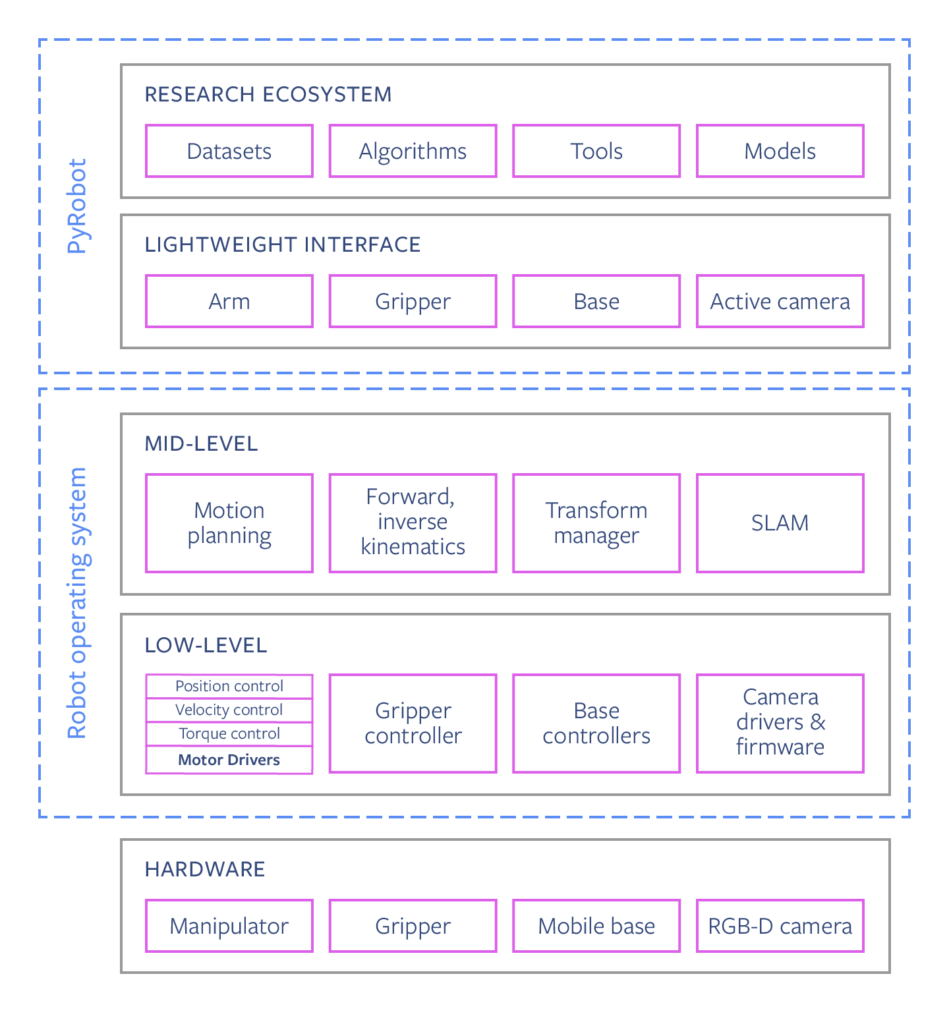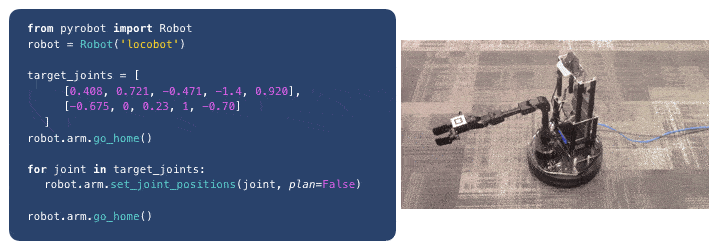As major technology companies look to robotics and artificial intelligence to grow their ecosystems of suppliers, partners, and customers, they have embraced the open-source community. Facebook Inc. today announced that it is making the PyRobot framework for robotics research and benchmarking open source.
PyRobot, which Facebook developed with Carnegie Mellon University (see video above), is designed to allow AI researchers and students to get robots working in just a few hours without specialized knowledge of device drivers, controls, or planning.
“PyRobot will help Facebook AI advance our long-term robotics research, which aims to develop embodied AI systems that can learn efficiently by interacting with the physical world,” said Facebook, which was one of The Robot Report‘s “10 companies to watch in 2019.”
PyRobot APIs built on ROS
“PyRobot is a lightweight, high-level interface on top of the Robot Operating System (ROS),” explained Abhinav Gupta, research manager, and Saurabh Gupta, research scientist at Facebook. “It provides a consistent set of hardware-independent midlevel APIs [application programming interfaces] to control different robots. PyRobot abstracts away details about low-level controllers and interprocess communication, so machine learning experts and others can simply focus on building high-level AI robotics applications.”

Overview of the PyRobot system architecture. Source: Facebook
They noted that PyRobot could make it easier for researchers to set benchmarks, share data, and build on one another’s work. It posted a request for proposals for “Democratizing Robotics” using PyRobot and LoCoBot, a low-cost, open-source robot, as a development platform. The framework also currently supports Rethink Robotics‘ Sawyer collaborative robot, and more platforms will be added.
PyRobot abstracts functions such as position, velocity, and torque control for joints, as well as path planning, kinematics, and visual simultaneous localization and mapping (SLAM), said Facebook. This allows developers to program the robots with relatively few lines of Python code.

A LoCoBot can move its arm with just a few lines of code. Source: Facebook
For PyRobot, Facebook will provide pre-trained models of navigation, grasping, and pushing algorithms. More advanced features such as Internet of Things security are left to developers, noted Wired.
Facebook interest in robotics continues
Facebook has expanded its outreach and research around AI, machine learning, and computer vision. In December, the company made the PyText natural language platform and the DeepFocus system virtual reality images open source.
Last month at its F8 conference, Faceobook discussed its PyTorch deep learning framework and the Ax and BoTorch open source tools for exploration and optimization problems. Last week, it also made AI Habitat, a simulation platform for embodied AI research, open source.
Other examples of tech companies trying to work with the robotics developer and open source community include Amazon Web Services’ RoboMaker cloud robotics platform, Microsoft’s integration of ROS into Windows 10, and NVIDIA’s Jetson platform and Isaac SDK.
“The cost of hardware and the complexity of specialized software has limited the scale of robotics research,” stated Facebook. “With lower barriers to entry, researchers can deploy several robots that collect data and learn in parallel, for example. By providing a common framework across different hardware, PyRobot will lead to development of benchmarks in robotics (similar to other areas in AI) and quantify the pace of progress. We plan to work with others in the robotics research community to move toward building these benchmarks.”
“We believe open collaboration is an important part of advancing the field and delivering the benefits of AI broadly,” said the Facebook researchers.

